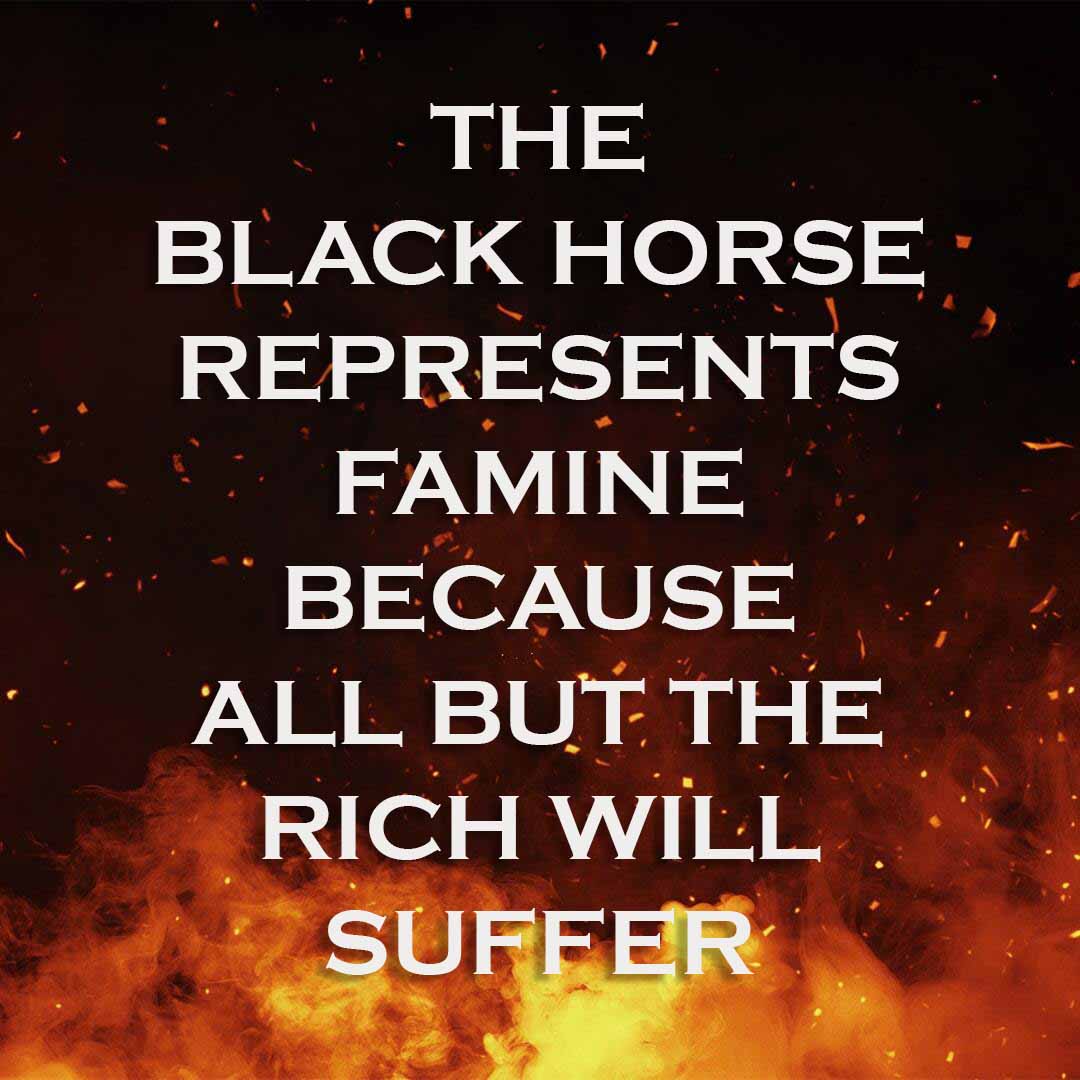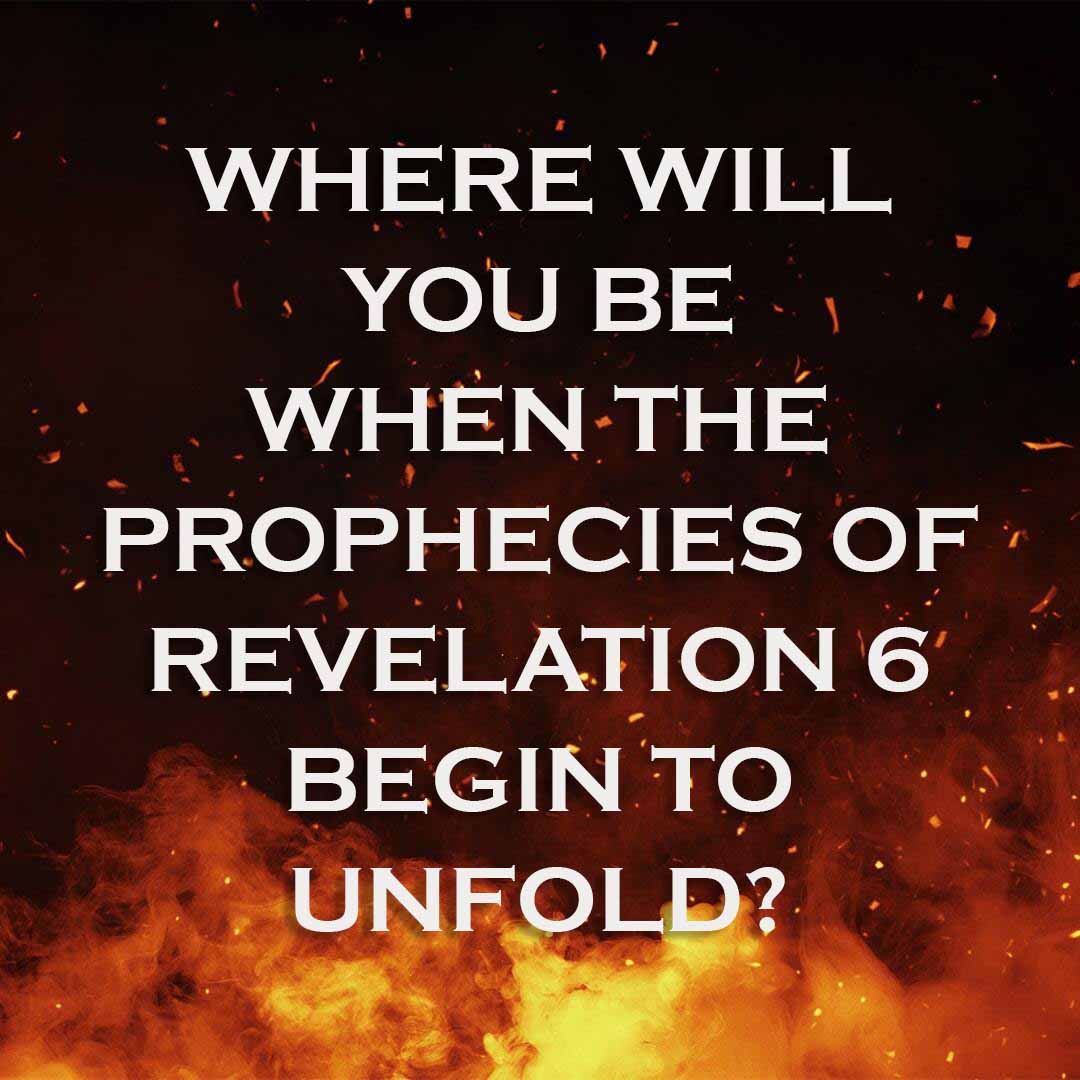In the Olivet Discourse, Jesus explained that a surge of false prophets, wars, famines, and diseases would indicate the end of the world is drawing near. A cursory look around our globe suggests these signs have already begun to materialize. The COVID-19 pandemic, food shortages, massive inflation, and the Ukraine invasion are just a few examples. Although these events are mere shadows of the horrors to come, we can draw a straight line from the prophecies of Matthew 24 to the four horsemen of Revelation 6 that mark the beginning of the Tribulation.
Connecting Matthew 24 and Revelation 6
The horsemen of the Apocalypse represent four aspects of God’s judgment that will pour out on the earth at the beginning of the Tribulation. Signs of escalating violence, famine, and disease in our world suggest the horsemen are already preparing to gallop onto the pages of history.
| The Signs of the Olivet Discourse | The Seal Judgments of Revelation |
|---|---|
| False Christs and False Prophets Matthew 24:4-5, 11 | White Horse: Antichrist Revelation 6:2 |
| Wars and Rumors of Wars Matthew 24:6-7 | Red Horse: War and Bloodshed Revelation 6:3-4 |
| Famines Matthew 24:7 | Black Horse: Famine Revelation 6:5-6 |
| Pestilence and Death Matthew 24:7-8 | Pale Horse: Pestilence and Death Revelation 6:7-8 |
Excerpted from The World of the End
From Jesus’ prophecy, we can determine that we are living in the world of the end. Global events are coalescing into a unified movement like a symphony building to a dramatic climax. The next event on God’s prophetic timeline is the Rapture—an abrupt caesura, a break in time that will punctuate the beginning of the Tribulation period. Until then, the ominous beat of history drums on, building toward the trumpet’s sound.
At the moment of the Rapture, Christ will descend with a shout, calling every Christian to rise and meet Him in the air before ushering us into heaven. Meanwhile, the Holy Spirit’s restraining influence will take its exit from earthly affairs and close the curtain on the Church Age. As spiritual darkness envelops the earth, all hell will break loose, beginning with the four horsemen of the Apocalypse.
In the Old Testament, horses represented conquest, battle, war, and attack (Job 39:19-25; Zechariah 6:1-8). Here, in Revelation 6, the horses and riders of the Apocalypse represent God’s conquest of evil on earth and the forces He uses to accomplish His divine judgment.
The Rider on a White Horse: The Antichrist
Sounding the first shrill notes of the Tribulation, the symphony will herald the arrival of the rider on a white horse. In Revelation 6:2, the apostle John describes it this way: “I looked, and behold, a white horse. He who sat on it had a bow; and a crown was given to him, and he went out conquering and to conquer.” This rider represents the Antichrist. Though he will be on earth before the start of the Tribulation and may be alive today, he will not be revealed as the Antichrist until after the Rapture.

The Antichrist’s bow is a symbol of his ability to conquer. He carries no arrows because he rides under a banner of artificial peace. Instead of winning in battle, he will gain bloodless victories through silver-tongued promises. His eloquence will captivate the masses and unite the world’s armies. He is the prince who will make a covenant with Israel to protect the Jews from their enemies at the midpoint of the Tribulation (Daniel 9:26).
In old westerns, viewers could count on the hero to ride in on a white horse. But make no mistake—this man will not be a hero. He will be a wolf in sheep’s clothing. Instead of bringing peace, he will bring destruction and violate every treaty he ratifies. The Antichrist will be the worst tyrant the world has ever known.
Because Revelation 19:11 refers to Christ riding on a white horse, some believe the rider in Revelation 6:2 also must be Christ. However, several differences make that conclusion implausible. Consider these distinctions:
- In Revelation 19, Christ’s weapon is a sword, but in Revelation 6, the rider’s weapon is a bow with no arrows.
- Christ wears a royal crown in Revelation 19, but the rider in Revelation 6 wears a victor’s crown. Anyone could wear the victor’s crown; only the Son of God could wear the kingly diadem.
- The rider in Revelation 6 signals the beginning of God’s judgment, while the Revelation 19 rider marks the end. It makes more logical sense for Christ to appear at the Second Coming than at the beginning of the Tribulation.
Although there are similarities between the two riders, they are distinctly different. Satan has always counterfeited the work of Christ. Even now, lesser antichrists—operating under Satan’s control—seize power through hollow assurances of peace and prosperity. And during the Tribulation, Satan’s deceptions will intensify.
The Rider on a Red Horse: War and Bloodshed
Following on the heels of the white horse, a second horse and rider gallop onto the scene. John says, “Another horse, fiery red, went out. And it was granted to the one who sat on it to take peace from the earth, and that people should kill one another; and there was given to him a great sword” (Revelation 6:4). This blood-red beast personifies war, and his rider carries an assassin’s sword.
Of course, war is nothing new to humanity. Conservative estimates calculate that armed conflicts have claimed the lives of at least fifty million people during the past 65 years. Even so, the wars yet to be fought and their accompanying suffering will exceed anything in history.
Not only will nations take up arms against each other, but also individuals will attack each other. In Matthew 24:9-12, Jesus warns of escalating betrayal, hatred, lawlessness, and offense in the days leading up to the Tribulation. And once heaven releases the rider on a red horse, the Antichrist’s reign of terror will be accompanied by rampant bloodshed and murder.
The Rider on a Black Horse: Famine
In John’s prophetic vision, the next rider sits upon a black horse, carrying “a pair of scales in his hand” (Revelation 6:5), and John hears a voice saying, “A quart of wheat for a denarius, and three quarts of barley for a denarius; and do not harm the oil and the wine” (Revelation 6:6). Putting these measurements into context, people will work a full day to earn just enough money for food during the Tribulation. Only costly provisions like oil and wine will not diminish. The black horse represents famine because all but the rich will suffer.

Humanitarians have already sounded the alarm about global food shortages. The Global Hunger Index, compiled and published by European humanitarian organizations, used language from Revelation 6 to describe current conditions. In 2015, the index reported, “War and famine, two fearsome horsemen, have long ridden side by side. Armed conflict disrupts food systems, destroys livelihoods, displaces people, and leaves those who do not flee both terrified and unsure when they will eat their next meal.” The situation has not improved since the time of this report. The U.S. Department of State reports, “More than 765 million people across the globe were chronically hungry in 2021.”
Food shortages will play directly into the Antichrist’s hands. Revelation 13:17 says, “No one may buy or sell except one who has the mark or the name of the beast, or the number of his name.” In other words, the Antichrist (“the beast”) will control the world’s food supply. Hunger is a primary human motivation, and the Antichrist will use it to secure people’s allegiance to him during the Tribulation.
The Rider on a Pale Horse: Pestilence and Death
Suffering and death are the logical outcomes of ruthless dictators, war, and famine. During the Tribulation, it will be no different. As the fourth seal opens in John’s prophetic vision, he sees a rider on a pale horse. “And the name of him who sat on it was Death, and Hades followed with him. And power was given to them over a fourth of the earth, to kill with sword, with hunger, with death, and by the beasts of the earth” (Revelation 6:8).
Each of the three previous horses had a single rider. Now John envisions Death riding the fourth horse with Hades following close behind it. This ominous company will slay 25% of the global population through violence, famine, diseases, and wild animals. Along with armed conflicts and global hunger, we have already witnessed a spate of illnesses that jump from animal species to humans and cause widespread devastation. Compounding the problem is international travel. It just takes one asymptomatic traveler to fly from country to country and spread deadly infection in a matter of hours.
The rider on a pale horse will reap a terrible harvest from the earth. And John’s prophecy in Revelation 6 aligns perfectly with Jesus’ prediction in the Olivet Discourse: “You will hear of wars and rumors of wars. See that you are not troubled; for all these things must come to pass, but the end is not yet. For nation will rise against nation, and kingdom against kingdom. And there will be famines, pestilences, and earthquakes in various places. All these are the beginning of sorrows” (Matthew 24:6-8).
What Do the Four Horsemen of the Apocalypse Mean for Us Today?
Sorrows form the backdrop for what will come in the Tribulation and will increase in intensity until Christ returns. Despite this, Jesus bids us not to be troubled and offers a promise to all who remain faithful to the end: “Because you have kept My command to persevere, I also will keep you from the hour of trial which shall come upon the whole world, to test those who dwell on the earth” (Revelation 3:10). Through every season, the Lord remains sovereign and will preserve His people until history arrives at its pre-ordained conclusion.

Christians will experience suffering, martyrdom, hatred, and betrayal in the world of the end, but the Lord promises to deliver us from the Tribulation. The assurance of Revelation 3:10 and the Church’s absence through the central chapters of Revelation affirm that Christ is the believer’s ark of deliverance from the Tribulation storms. No matter how dark the season we might be enduring, our future is secure in Christ. The Rapture is nearer now than when we first believed. As we see signs of the End Times intensifying, we can have peace because we know the One in charge.
The Rapture will open the gates of heaven to all God’s children, but it will trigger a horrific chain of events for those left on earth. Anyone who does not know Christ as their Lord and Savior will endure seven years of God’s judgment, beginning with the four horsemen of the Apocalypse.
Jesus warned, “Watch therefore, for you know neither the day nor the hour in which the Son of Man is coming” (Matthew 25:13). Every bit of His teaching has a practical purpose. Jesus wants us to know about the future so we can trust Him, come what may.
As world events swell into a loud cacophony, the drumming of horses’ hooves will reverberate through the chaos. Tyrants will incite wars and leverage food insecurity to solidify their power. Famines and plagues will lay waste to vast populations. Life will continue to get worse, not better, as the world braces for the horsemen of the Apocalypse to proceed across the stage of history.
Where will you be when the prophecies of Revelation 6 begin to unfold? Don’t wait another minute to decide. After the moment of the Rapture, it will be too late to reconsider.
If you would like to learn more about what it means to trust Jesus as your Lord and Savior, please request a complimentary copy of Your Greatest Turning Point.
